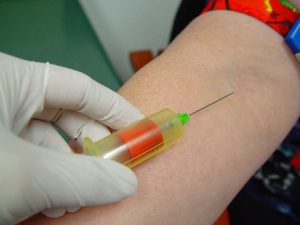15th August 2018, Dr Chee L Khoo
Diabetes can be diagnosed using a myriad of criteria – fasting glucose >7.0mmol/L, 2-hour post prandial >11.0 mmol/L or HbA1c > 6.5%. There are limitations to each of those tests and it is not one size fits all. The myriad of diagnostic tests allows clinicians to choose the most appropriate test for our patients based on their individual characteristics. Last month we review the issue of using only one test without the confirmatory test later (see “Diagnosing Diabetes – is one reading enough?”).
The Australian Diabetes Society (ADS) and the RACGP recommends confirming the diagnosis with a repeat test on another day. The confirmatory test can be performed using a different method of testing. On one hand, we don’t want to have undiagnosed diabetes missed but on the other hand, the diagnosis of diabetes can have medico-legal implications for many patients. Further, the bean counters also don’t want us to screen everyone with an HbA1c test either. I have to agree with that.
Pregnant women undergoing oral glucose tolerance test (OGTT) often have the full fasting, 1 hour and 2 hour testing as the diagnosis of gestational diabetes (GDM) or diabetes in pregnancy has a criteria for the 1 hour reading (>10.0 mmol/L). What about non-pregnant patients undergoing OGTT? What is the criteria for the 1 hour reading? Well, there are currently no standards for the one hour reading and it is not recommended in the OGTT for diagnosis of diabetes.
While there are no official criteria for the one hour reading, many previous studies have looked at the value of identifying individuals at high risk of developing diabetes as well the relationship between the one hour reading with cardio-metabolic alterations, organ damage, and cardiovascular disease. A recent literature search analysed the implications of one hour reading with prediction of type 2 diabetes (T2D) and cardiovascular disease. The results were published last month in the Journal of Clinical Endocrinology and Metabolism (JCEM).
Amongst patients with normal glucose tolerance (NGT), a one hour reading of >8.6mmol/L can recognise individuals at high risk of developing T2D. These patients also demonstrated impaired insulin sensitivity, β-cell dysfunction, and increased glucose intestinal absorption, which are known to be involved in T2DM pathogenesis. Importantly, numerous studies have demonstrated that a value of one hour glucose reading of >8.6 mmol/L in NGT individuals is not only linked to an increased risk for future T2DM, but is also able to identify those having a worse cardiovascular phenotype and an increased risk of adverse cardiovascular outcomes.
In another recent longitudinal study of an American Indian community in the southwestern U.S., a population at high risk for type 2 diabetes, the one hour reading of > 9.5mmol/L was similar in predicting retinopathy compared with a 2-hour reading.
In 212 patients who were at high risk of developing T2D, the one hour reading of >8.6 mmol/L were superior to HbA1c in differentiating T2D from prediabetes.
As family doctors, we have the great opportunity to follow up patients and their family members for years. We try to motivate them to make wise lifestyle changes years ahead of them developing T2D. Having some form of guidance in the level of one hour reading sometimes helps in our prevention efforts. Further, rather than sitting on our hands until all the criteria for T2D diagnosis is satisfied, we should be pro-actively working to manage those cardiovascular risk factors before the development of T2D.
Access the abstract here.
Reference
Teresa Vanessa Fiorentino, Maria Adelaide Marini, Elena Succurro, Francesco Andreozzi, Maria Perticone, Marta Letizia Hribal, Angela Sciacqua, Francesco Perticone, Giorgio Sesti; One-hour post-load hyperglycemia: implications for prediction and prevention of type 2 diabetes, The Journal of Clinical Endocrinology & Metabolism, https://doi.org/10.1210/jc.2018-00468
Ethan Paddock, Helen C. Looker, Paolo Piaggi, William C. Knowler, Jonathan Krakoff, Douglas C. Chan. One-Hour Plasma Glucose Compared With Two-Hour Plasma Glucose in Relation to Diabetic Retinopathy in American Indians. Diabetes Care 2018 Jun; 41(6): 1212-1217
Ram Jagannathan, Mary Ann Sevick, Dorothy Fink et al. The 1-hour post-load glucose level is more effective than HbA1c for screening dysglycemia. Acta Diabetologica, 2016, Volume 53, Number 4, Page 543
